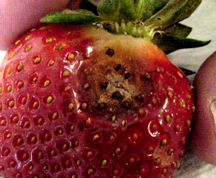For the past 6 years, Rutgers has led efforts in the breeding of sweet basil for resistance to downy mildew. Currently, basil downy mildew threatens 100% of the basil acreage in the US and other parts of the world.
Rutgers University, along with researchers at Michigan State, University of Florida, Oregon State University, Cornell University, California State University, and North Carolina State University as well as the USDA Agricultural Research Service have been awarded a $2.3-million USDA grant to help fight downy mildew in a number of highly valuable crops. The announcement from MSU who leads this effort can be found on MSU Today.

